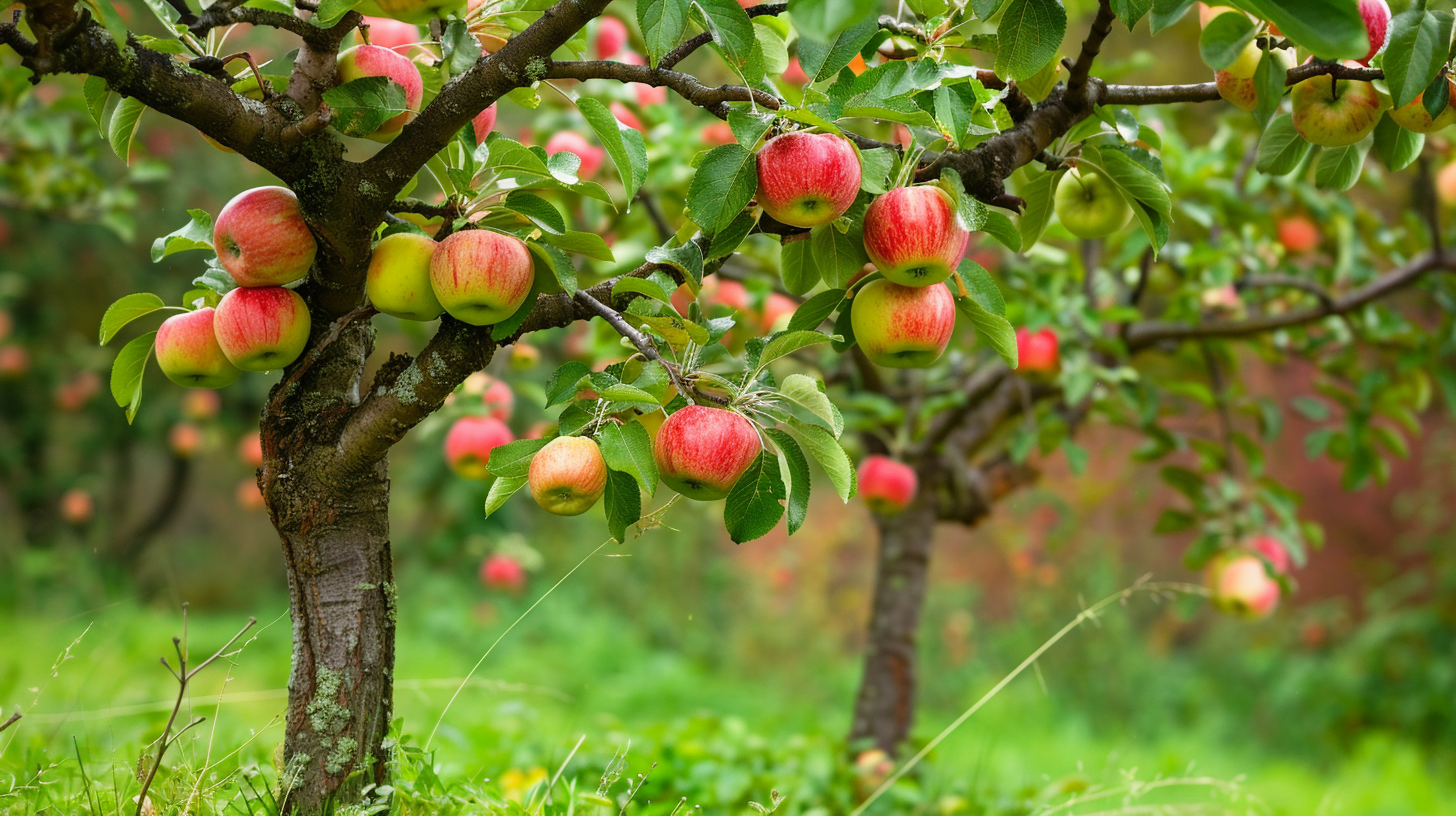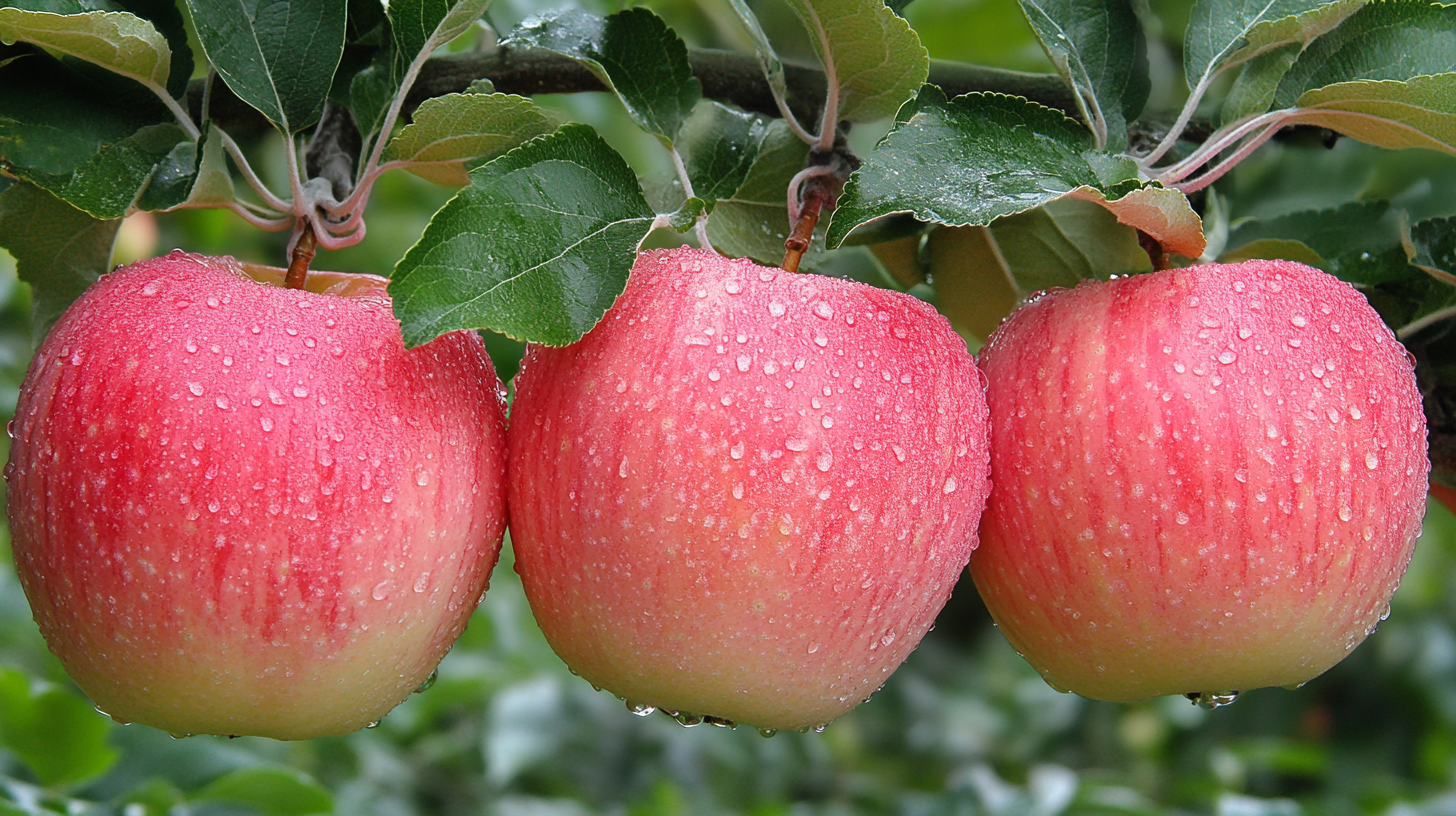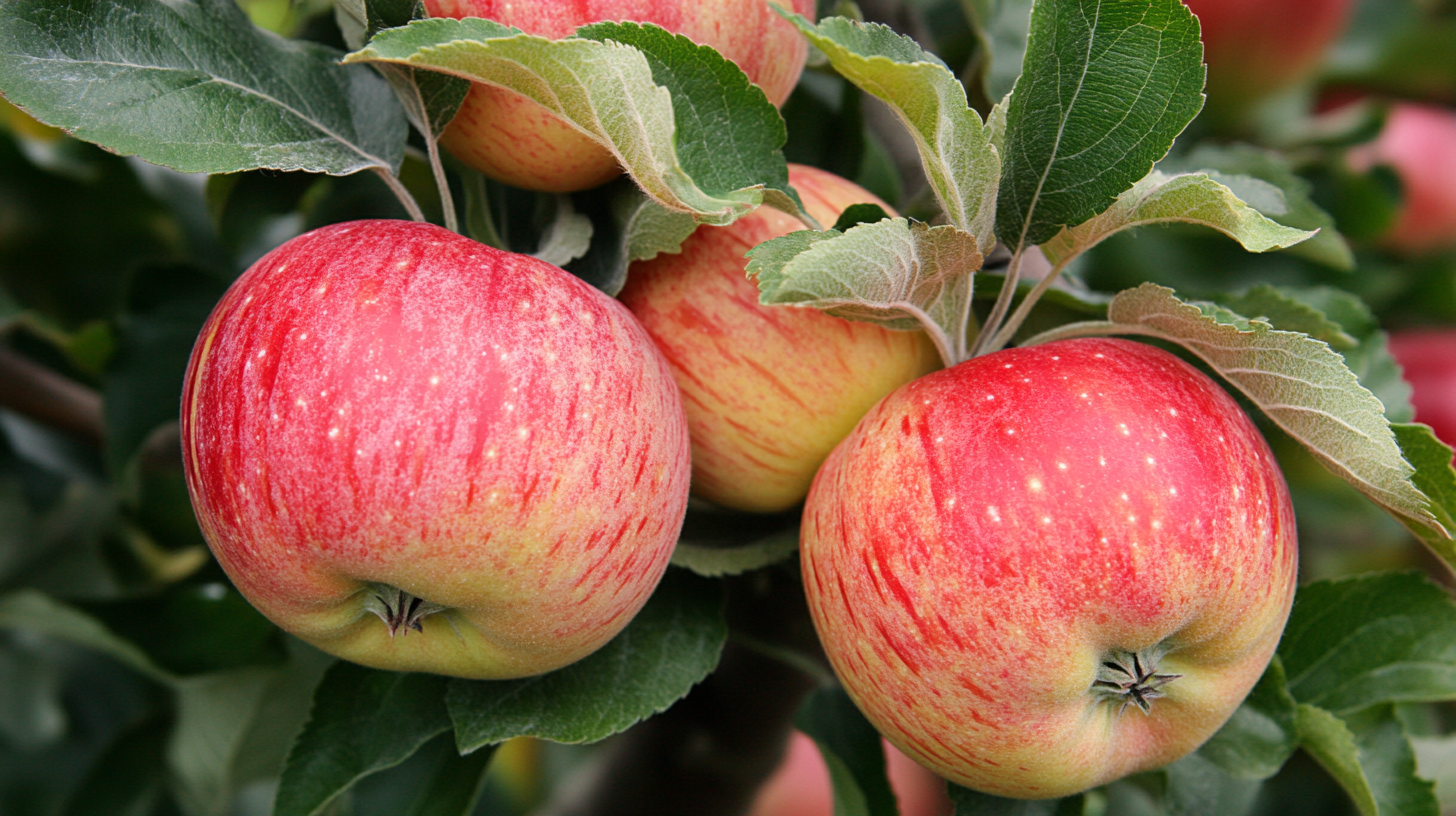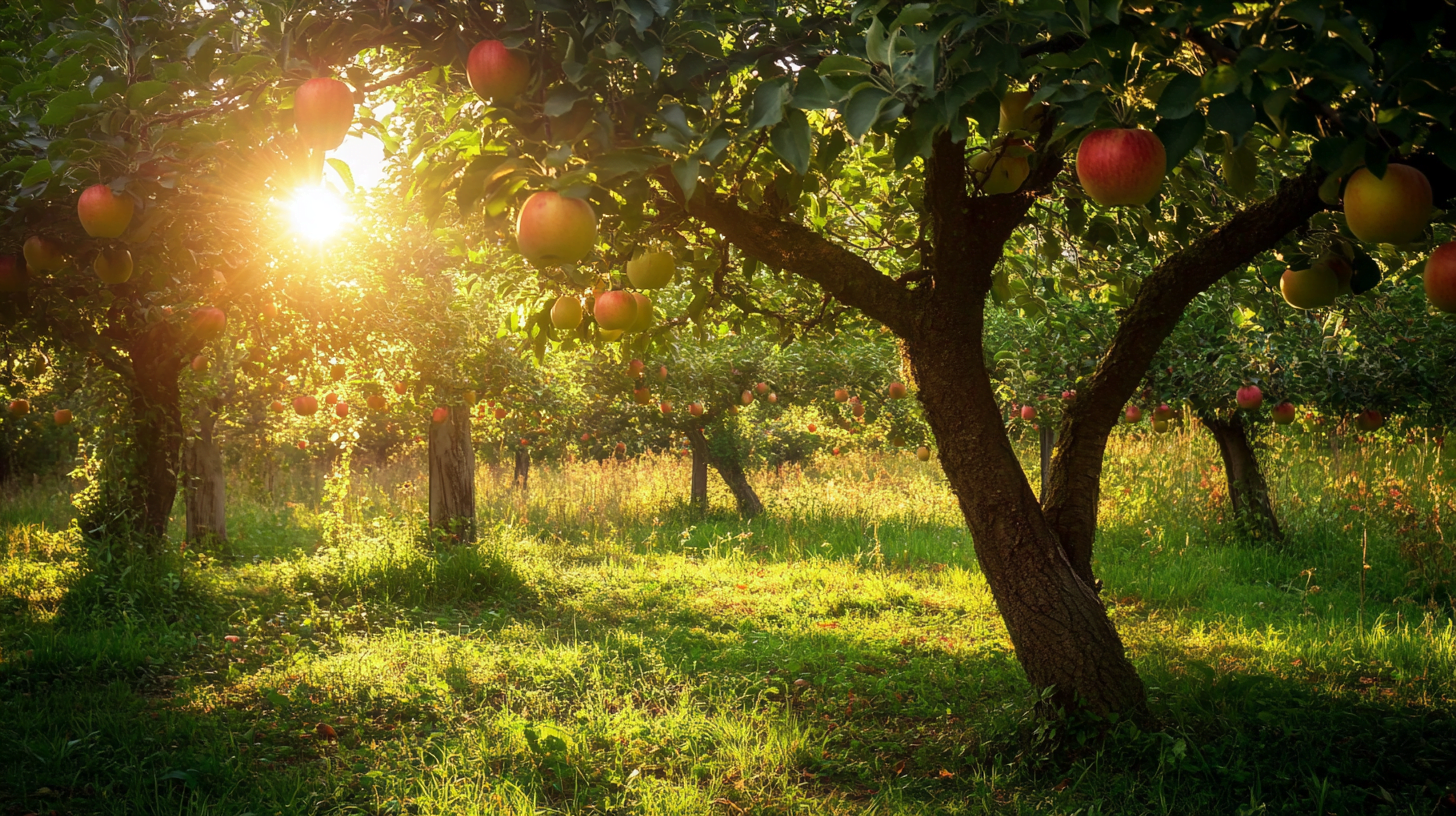Beautiful Plants For Your Interior

Table of Contents
Introduction
Imagine biting into a crisp, homegrown apple. Tempting, right? Growing apple trees can be a rewarding experience, but it comes with its own set of challenges. This article aims to explore whether apple trees are hard to grow, providing you with comprehensive insights into the process. Understanding the difficulty level before starting can save you time, effort, and resources.
Understanding Apple Trees
Types of Apple Trees
Apple trees come in various types, each with its own growth habits and requirements. The main types include:
- Dwarf Apple Trees: These trees grow up to 8-10 feet tall and are ideal for small gardens.
- Semi-Dwarf Apple Trees: Reaching heights of 12-15 feet, these trees are a good middle ground.
- Standard Apple Trees: These can grow up to 20-30 feet tall and require more space.
Popular apple varieties for home gardens include Honeycrisp, Fuji, and Granny Smith. Each variety has its own unique flavor and growth requirements.
Apple Tree Growth Stages
Understanding the growth stages of apple trees can help you manage their care more effectively:
- Seedling Stage: This is the initial stage where the tree is establishing its root system.
- Juvenile Stage: The tree focuses on growing leaves and branches but does not produce fruit.
- Mature Stage: The tree starts to produce flowers and fruit.
- Bearing Fruit: The tree consistently produces fruit each season.
Factors Affecting Apple Tree Growth
Climate and Weather Conditions
Apple trees thrive in temperate climates. They require a certain number of chill hours (hours below 45°F) to break dormancy and produce fruit. Ideal climate zones for apple trees are USDA zones 4-8. Extreme temperatures, both hot and cold, can affect their growth. Frost can damage blossoms, while excessive heat can stress the tree.
Soil Requirements
Apple trees prefer well-draining soil with a pH level between 6.0 and 7.0. Soil composition should be rich in organic matter. Before planting, it’s essential to test your soil and amend it if necessary. Adding compost or well-rotted manure can improve soil fertility and structure.
Sunlight and Watering Needs
Apple trees need full sunlight (at least 6-8 hours of direct sunlight per day) to produce healthy fruit. Watering should be consistent, especially during dry periods. Overwatering can lead to root rot, while underwatering can stress the tree. A good rule of thumb is to water deeply once a week, ensuring the soil is moist but not waterlogged.
Planting Apple Trees
Choosing the Right Location
Selecting the right location is crucial for the success of your apple trees. Consider the following factors:
- Sunlight: Ensure the site receives full sunlight.
- Soil: Choose a location with well-draining soil.
- Space: Allow adequate spacing between trees to ensure good air circulation and reduce disease risk.
Planting Techniques
Follow these steps to plant your apple tree:
- Dig a Hole: The hole should be twice as wide and as deep as the root ball.
- Prepare the Roots: Soak the roots in water for a few hours before planting.
- Plant the Tree: Place the tree in the hole, ensuring the graft union is above soil level.
- Backfill and Water: Fill the hole with soil, water thoroughly, and mulch around the base.
Common mistakes to avoid include planting too deep, not watering enough, and failing to mulch.
Caring for Apple Trees
Pruning and Training
Pruning is essential for maintaining the health and productivity of apple trees. It helps improve air circulation, remove dead or diseased wood, and shape the tree. Prune during the dormant season (late winter to early spring) using the following techniques:
- Thinning Cuts: Remove entire branches to reduce crowding.
- Heading Cuts: Shorten branches to encourage new growth.
- Training: Use stakes or trellises to guide young trees into the desired shape.
Fertilization and Nutrient Management
Apple trees require regular fertilization to thrive. Use a balanced fertilizer (e.g., 10-10-10) in early spring before new growth begins. Follow these guidelines:
- First Year: Apply 1/2 pound of fertilizer.
- Subsequent Years: Increase the amount by 1/2 pound each year, up to a maximum of 5 pounds.
Signs of nutrient deficiencies include yellowing leaves (nitrogen deficiency) and poor fruit development (potassium deficiency).
Pest and Disease Management
Apple trees are susceptible to various pests and diseases. Common pests include:
- Apple Maggot: Causes small, brown tunnels in the fruit.
- Codling Moth: Larvae burrow into the fruit, causing it to rot.
Common diseases include:
- Apple Scab: Causes dark, scabby lesions on leaves and fruit.
- Fire Blight: Bacterial disease that causes branches to wilt and die.
Control methods include:
- Organic: Use neem oil or insecticidal soap.
- Chemical: Apply appropriate pesticides as needed.
Harvesting and Storing Apples
When to Harvest
Knowing when to harvest your apples is crucial for the best flavor and storage life. Signs that apples are ready for harvest include:
- Color: The skin color changes to the variety’s characteristic hue.
- Ease of Picking: Apples come off the tree easily when twisted.
- Taste: The fruit tastes sweet and crisp.
Storing and Preserving Apples
Proper storage can extend the shelf life of your apples. Here are some methods:
- Short-term Storage: Keep apples in a cool, dark place with good ventilation.
- Long-term Storage: Store apples in a refrigerator or a root cellar at 32-40°F with high humidity.
Preservation methods include:
- Canning: Make apple sauce or apple butter.
- Drying: Dehydrate apple slices for snacks.
Common Challenges and Solutions
Dealing with Poor Fruit Production
Low fruit yield can be frustrating. Common reasons include:
- Poor Pollination: Ensure you have multiple apple tree varieties for cross-pollination.
- Nutrient Deficiency: Regularly fertilize your trees.
- Improper Pruning: Prune to encourage fruiting wood.
Addressing Environmental Stress
Environmental stress can impact apple tree health. Protective measures include:
- Mulching: Helps retain soil moisture and regulate temperature.
- Frost Protection: Use frost blankets or water the soil before a frost event.
- Windbreaks: Plant hedges or install barriers to protect from strong winds.

Benefits of Growing Apple Trees
Health Benefits of Apples
Apples are not only delicious but also packed with nutrients. They are rich in:
- Fiber: Aids in digestion.
- Vitamin C: Boosts the immune system.
- Antioxidants: Protect against chronic diseases.
Environmental and Economic Benefits
Growing apple trees offers several benefits:
- Biodiversity: Apple trees attract pollinators and other beneficial insects.
- Homegrown Produce: Reduces grocery bills and ensures fresh, organic fruit.
Conclusion
Growing apple trees can be challenging, but the rewards are well worth the effort. By understanding the factors affecting growth, proper planting techniques, and effective care practices, you can enjoy a bountiful harvest of delicious apples. So, why not give it a try and experience the joy of homegrown fruit?
FAQs
How long does it take for an apple tree to bear fruit?
Apple trees typically take 3-5 years to bear fruit, depending on the variety and growing conditions.
Can apple trees be grown in containers?
Yes, dwarf apple trees can be grown in containers. Ensure the pot is large enough and has good drainage.
What are the best companion plants for apple trees?
Companion plants like marigolds, chives, and nasturtiums can help deter pests and improve soil health.
How do I protect my apple tree from animals?
Use fencing, tree guards, or repellents to protect your apple trees from deer, rabbits, and other animals.
By following this comprehensive guide, you’ll be well-equipped to grow healthy and productive apple trees. Happy gardening!


